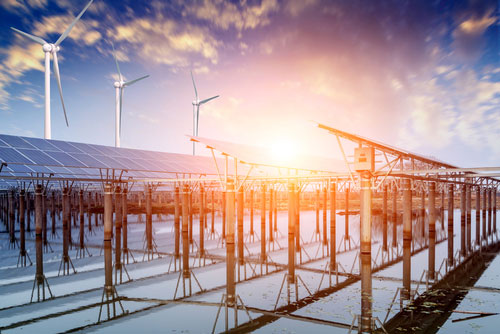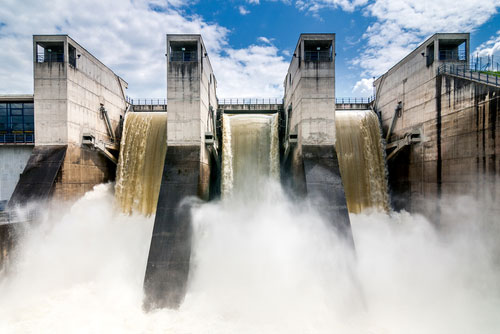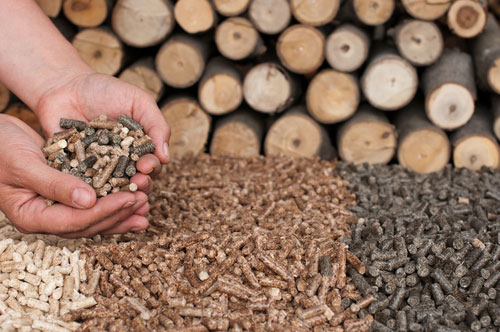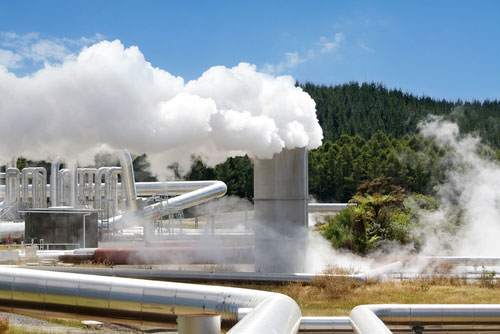What do "non-renewable energy" and "renewable energy" mean? Give some examples

Những câu hỏi liên quan
What do "non-renewable energy" and "renewable energy" mean? Give some examples
"Năng lượng không tái tạo" và "năng lượng tái tạo" nghĩa là gì? Đưa ra vài ví dụ
Đúng 0
Bình luận (1)
các bạn ơi viết cho mình một bài văn tiếng anh về nguồn năng lượng nhé:)) các câu hỏi như sauwhat is renewable energy?what are some examples of renewable energy?what is non-renewable energy?what are some examples of non- renewable energy?where does carbon dioxide emission come from?what are some effects of global warming?what can you doto reduce air pollution?how can we save water?how can you save energy?how can you save wood for producing paper?
Đọc tiếp
các bạn ơi viết cho mình một bài văn tiếng anh về nguồn năng lượng nhé:)) các câu hỏi như sau
what is renewable energy?
what are some examples of renewable energy?
what is non-renewable energy?
what are some examples of non- renewable energy?
where does carbon dioxide emission come from?
what are some effects of global warming?
what can you doto reduce air pollution?
how can we save water?
how can you save energy?
how can you save wood for producing paper?
We can save energy by doing some following tips. First of all, we should use electricity more efficiently and reduce our electricity bill. We need to turn off the TV when we are not watching, turn off all the lights before going to bed. Besides, we should not leave the fridge door open in a long time due to wasting of electricity. Moreover, we should save water by taking showers instead of baths or turning off the water when you don not use it. The next tip is reducing the use of fossil fuels like gas, coal, and oil. It is not only saving energy but also protect our environment. To do this, we can use public transport and avoid using car or motorbike for short trip. All in all, because our energy is limited we need to reserve it for the future generations.
Đúng 0
Bình luận (1)
Topic 11 What is renewable energy? Give some examples.2 What is non-renewable energy? Give some examples.Topic 21 Which hour are rush hours in your community?2 Why should we travel by public transport instead of private transport?3 What difficulties do you meet when you are stuck in a traffic jam?4 What means of transport do you think will be used in the future?Topic 31 Give four problems of overpopulation2 Give measures to solve these problems
Đọc tiếp
Topic 1
1 What is renewable energy? Give some examples.
2 What is non-renewable energy? Give some examples.
Topic 2
1 Which hour are rush hours in your community?
2 Why should we travel by public transport instead of private transport?
3 What difficulties do you meet when you are stuck in a traffic jam?
4 What means of transport do you think will be used in the future?
Topic 3
1 Give four problems of overpopulation
2 Give measures to solve these problems
Renewable energies (or renewables) are ways to generate energy from (theoreally) unlimited natural resources. These resources are either available with no time limit or replenish more quickly than the rate at which they are consumed.
Renewable energies are generally spoken of as opposed to fossil fuel energies. The fossil fuels’ stocks are limited and non-renewable in the human timescale. The most known examples of these resources are coal, oil or natural gas. On the contrary, renewable energies are produced from renewable sources. Here, we’re talking about energy coming from solar rays, wind or water cycles – all theoreally unlimited on a human scale time.
Renewable energies are also often referred to as “green energies” or “clean energies”. Still, this doesn’t mean that these energies aren’t harmful to the environment and have zero impact. Nonetheless, they have a low environmental impact compared to fossil fuels. That’s why they’re increasingly becoming important elements in companies’ CSR strategies in terms of sustainable development.
There are several types of renewable energies that are produced by different sources such as the sun, wind or water. In fact, these renewables’ power consumption has been growing over the last year. They have provided 8% of the world’s electricity in 2017 and they now cover 1/3 of the power mix in Europe. At the same time, the energy grid gets 1/4 of the total energy in China and 1/6 in the United States, India, and Japan. Let’s learn more about them below.
Related content:Is Solar Energy Really Green And Sustainable?1 – Solar Energy

This type of renewable energy comes directly from the capture of solar radiation. Here, the solar radiation is absorbed by specific sensors and rebroadcasted following 2 possible operation modes:
Examples of Solar Energy in the World
It’s estimated that in 2017 1,6% of the worldwide generated energy came from solar sources. At the same time, solar power also contributed to 20% of the total energy growth in this same year. Some of the most known sources of solar energy are:
The Kurnool Ultra Solar Park in India. It has a total generation capacity of 1000MW and over 4 million solar panels installed;The Longyangxia Solar Park in China that has a total capacity of 850MW and covers around 25sq km.The Kamuthi Solar Facility in India: it has a total capacity of 648MV and covers 10sq km.Is Solar Energy Renewable or Nonrenewable?
Solar energy is inexhaustible in the sense that it will cease once the solar system’s star – the sun – dies. However, many people wonder if, from a perspective of human’s being able to capture and use solar energy in the long-term, whether solar energy is renewable or nonrenewable.
[Full answer available soon.]
2 – Windpower, a Renewable Energy
Wind power is another renewable energy. Here, the wind’s kine energy makes turbines spin and creates a mechanical movement. Afterward, a generator transforms this mechanical energy into electricity. There are several types of wind renewable energies: onshore wind turbines, off-shore wind turbines and even floating wind turbines. But the operating principles are basically the same for all these types of wind-generated energy.
Examples of Wind Power in the World
Wind power continues has also been growing, In fact, it provided 4.4% of global power generation in 2017. The highest installed wind capacity belongs to China (164GW). At the same time, in the EU, wind power provides 15% or more of the energy generated in several countries such as Germany, Portugal or Lithuania. Some of the most known sources of wind power energy are:
The Gansu Wind Farm in China. It is still under construction and it will be able to produce 20,000MV of power by 2020;The onshore Muppandal Wind Farm in India with a capacity of 1,500MW and over 3000 turbines;The Alta Wind Energy Center in the U.S. with a total capacity of 1,548MW that’s expected to reach 3,000MW by 2040;The Walney Extension in the UK. It has a total capacity of 659MW and it’s the world’s largest offshore farm.3 – Hydro-Electric Power

Hydro-electric power consists in the transformation of the kine energy of the water (from rivers, dams, marine currents or tides) into mechanical energy by turbines.
Examples of hydro-electric power in the world
The Sihwa Lake Tidal Power Station in South Korea. This is the world’s biggest tidal power installation and it has a capacity of 254 MW;The Rance Tidal Power Station in Brittany, France, has a 240 MW capacity;The Three Gorges Dam in China is the world’s largest power station in terms of installed capacity (22,500 MW).4- Biomass

Biomass is made up of organic materials from plants or animals that contain stored energy. The combustion of these natural materials produces renewable energy. Some examples of generating energy from biomass are:
Related content:
Palm oil has a huge environmental impact. What’s the impact of its use as a biofuel?What Is Biogas Energy Production?Examples of Biomass Energy in the World
Some of the most known biomass power plants in the world are:
The Iron Bridge power station in the UK, with a capacity of 740MW. It uses wood pellets as the main fuel;The Alholmenskaft power station in Finland. It has a 260MW energy generation capacity;The Polaniec power plant in Poland that uses mainly agricultural by-products and wood residues. It has a 205MW capacity.5- Geothermal Power as a Renewable Energy

The Earth generates and stores geothermal energy. In other words, radioactive materials decaying inside the Earth are emitting energy. Electricity can be created using directly or indirectly this energy, depending on the technology implemented. There are 3 main ways to use geothermal energy:
1 what festival do you like most ?
2 when and where does it take place ?
3 how does it celebrate ?
4 who can take part in it ?
5 what does renewable ,non -renewable energy mean ?
6 what sources of energy are renewable and non - renewable sources of energy ?
7 will future means of transport eco - friendly ?
8 what sources of energy will future means of transport used to travel ?
9 what types of future means of transport do you like best ?
10 can you describe it ?( name of transport , h...
Đọc tiếp
1 what festival do you like most ?
2 when and where does it take place ?
3 how does it celebrate ?
4 who can take part in it ?
5 what does renewable ,non -renewable energy mean ?
6 what sources of energy are renewable and non - renewable sources of energy ?
7 will future means of transport eco - friendly ?
8 what sources of energy will future means of transport used to travel ?
9 what types of future means of transport do you like best ?
10 can you describe it ?( name of transport , how it look , how it functions )
11 what are solutions to these problem in each places ?
1. Tet is the best festival to me
2. That celebrates the arrival of spring in Vietnam every year
3. There are many customs of Vietnamese people on Tet holiday. For example, they often visit their relatives, friends and temples. Some people visit the graves of their ancestors in their homeland. Before Tet holiday begins, people decorate and clean their house carefully to have a wonderful time with their family...
Đúng 0
Bình luận (1)
Give examples about renewable energy? What are the advantages and disadvantages of using it?
Renewable energy comes from a source that will not deplete. Two common examples of this type of energy are solar power and wind power. Geothermal power, hydropower, biomass, and tidal power are additional forms of renewable energy that produce power for our planet right now.
The primary advantage of renewable energy is that fewer potentially harmful emissions are released into the atmosphere. Although fossil fuels are used to create the products that allow for this power to be produced, most forms of renewable energy can become carbon neutral in 5 years or less.
The disadvantage of renewable energy is that it can be costly. Although wind power and solar power have become cost-competitive with coal-fired power and nuclear power in some communities, some forms are not cost-competitive globally yet when the cost per kilowatt hour is compared. In 2015, the lifetime cost per kilowatt hour of conventional coal was 9.5 cents, while the cost of offshore wind was 15.8 cents.
There are additional advantages and disadvantages of renewable energy to consider as well.
Đúng 0
Bình luận (0)
We use many different energy sources to do work for us. Energy sources are classified into two groups -renewable and nonrenewable. Non-renewable energy sources are those that take millions of years to form and will run out some day. It is energy that comes from fossil fuels such as coal, crude oil, and natural gas. Fossil fuels are mainly made up of carbon and were formed millions of years ago. The chemical reaction which takes place when we burn fossil fuels releases carbon compounds such as ca...
Đọc tiếp
We use many different energy sources to do work for us. Energy sources are classified into two groups -renewable and nonrenewable. Non-renewable energy sources are those that take millions of years to form and will run out some day. It is energy that comes from fossil fuels such as coal, crude oil, and natural gas. Fossil fuels are mainly made up of carbon and were formed millions of years ago. The chemical reaction which takes place when we burn fossil fuels releases carbon compounds such as carbon monoxide and carbon dioxide into the air. Carbon dioxide is one of the green house gases which is contributing to global warming and air pollution. On the other hand, renewable energy sources will never run out, are better for the environment and do not cause pollution. Renewable energy is often called green energy because it is a natural energy, always available and does not have to be formed like nonrenewable energy. The green energy is always there. For example, the Sun consistently shines, water is abundant, and the winds blow throughout the year. The five types include solar, energy from the Sun; geothermal, energy from heat within the Earth; hydroelectric, energy from moving water; biomass, energy from dead plants and microorganisms and finally, energy from the wind.
5. Are renewable sources bad for the environment?
6. Why is renewable energy called green energy?
5/ No, they aren't bad for the environment.
6/ Because it is a natural energy, always available, and doesn't have to be formed like non-renewable energy.
Đúng 2
Bình luận (1)
Hello students. Today Id like to tell you some information about types and sources of energy. Energy is classified into two main groups: renewable and non-renewable.The energy generated from natural sources such as the sun, wind, rain, and tides is called renewable energy. They are plentiful and can be generated again and again. They also have low carbon emissions so they are considered green and environment-friendly. Moreover, using renewable energy can reduce your electricity bills. Unfortunat...
Đọc tiếp
Hello students. Today I'd like to tell you some information about types and sources of energy. Energy is classified into two main groups: renewable and non-renewable.
The energy generated from natural sources such as the sun, wind, rain, and tides is called renewable energy. They are plentiful and can be generated again and again. They also have low carbon emissions so they are considered green and environment-friendly. Moreover, using renewable energy can reduce your electricity bills. Unfortunately, solar energy can be only used during the daytime but not during night or the rainy season. Geothermal energy also can bring toxic chemicals beneath the earth's surface to the top and can create environmental changes.
Non-renewable energy is the energy taken from other sources that are available on earth. They are limited and will run out in the future. They can't be re-generated in a short time. Fossil fuels - natural gas, oil and coal - are examples of them. They are cheap and easy to use. However, when burnt, they release toxic gases in the air so they cause serious environmental changes such as global warming. And the important thing is that non-renewable sources will expire someday.
Question 2: There is a large amount of non-renewable energy.
A. True
B. False
C. Not Given
Đáp án: C
Thông tin: Thông tin không có trong bài.
Đúng 0
Bình luận (0)
Hello students. Today Id like to tell you some information about types and sources of energy. Energy is classified into two main groups: renewable and non-renewable.The energy generated from natural sources such as the sun, wind, rain, and tides is called renewable energy. They are plentiful and can be generated again and again. They also have low carbon emissions so they are considered green and environment-friendly. Moreover, using renewable energy can reduce your electricity bills. Unfortunat...
Đọc tiếp
Hello students. Today I'd like to tell you some information about types and sources of energy. Energy is classified into two main groups: renewable and non-renewable.
The energy generated from natural sources such as the sun, wind, rain, and tides is called renewable energy. They are plentiful and can be generated again and again. They also have low carbon emissions so they are considered green and environment-friendly. Moreover, using renewable energy can reduce your electricity bills. Unfortunately, solar energy can be only used during the daytime but not during night or the rainy season. Geothermal energy also can bring toxic chemicals beneath the earth's surface to the top and can create environmental changes.
Non-renewable energy is the energy taken from other sources that are available on earth. They are limited and will run out in the future. They can't be re-generated in a short time. Fossil fuels - natural gas, oil and coal - are examples of them. They are cheap and easy to use. However, when burnt, they release toxic gases in the air so they cause serious environmental changes such as global warming. And the important thing is that non-renewable sources will expire someday.
Question 5: Non-renewable energy will run out in 150 years.
A. True
B. False
C. Not Given
Đáp án: C
Thông tin: Thông tin không có trong bài.
Đúng 0
Bình luận (0)
Hello students. Today Id like to tell you some information about types and sources of energy. Energy is classified into two main groups: renewable and non-renewable.The energy generated from natural sources such as the sun, wind, rain, and tides is called renewable energy. They are plentiful and can be generated again and again. They also have low carbon emissions so they are considered green and environment-friendly. Moreover, using renewable energy can reduce your electricity bills. Unfortunat...
Đọc tiếp
Hello students. Today I'd like to tell you some information about types and sources of energy. Energy is classified into two main groups: renewable and non-renewable.
The energy generated from natural sources such as the sun, wind, rain, and tides is called renewable energy. They are plentiful and can be generated again and again. They also have low carbon emissions so they are considered green and environment-friendly. Moreover, using renewable energy can reduce your electricity bills. Unfortunately, solar energy can be only used during the daytime but not during night or the rainy season. Geothermal energy also can bring toxic chemicals beneath the earth's surface to the top and can create environmental changes.
Non-renewable energy is the energy taken from other sources that are available on earth. They are limited and will run out in the future. They can't be re-generated in a short time. Fossil fuels - natural gas, oil and coal - are examples of them. They are cheap and easy to use. However, when burnt, they release toxic gases in the air so they cause serious environmental changes such as global warming. And the important thing is that non-renewable sources will expire someday.
Question 4: Non-renewable energy can be generated in a short time.
A. True
B. False
C. Not Given
Đáp án: B
Thông tin: They can't be re-generated in a short time.
Dịch nghĩa: Chúng không thể được tạo lại trong một thời gian ngắn
Đúng 0
Bình luận (0)


















